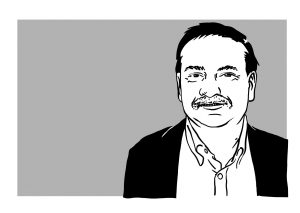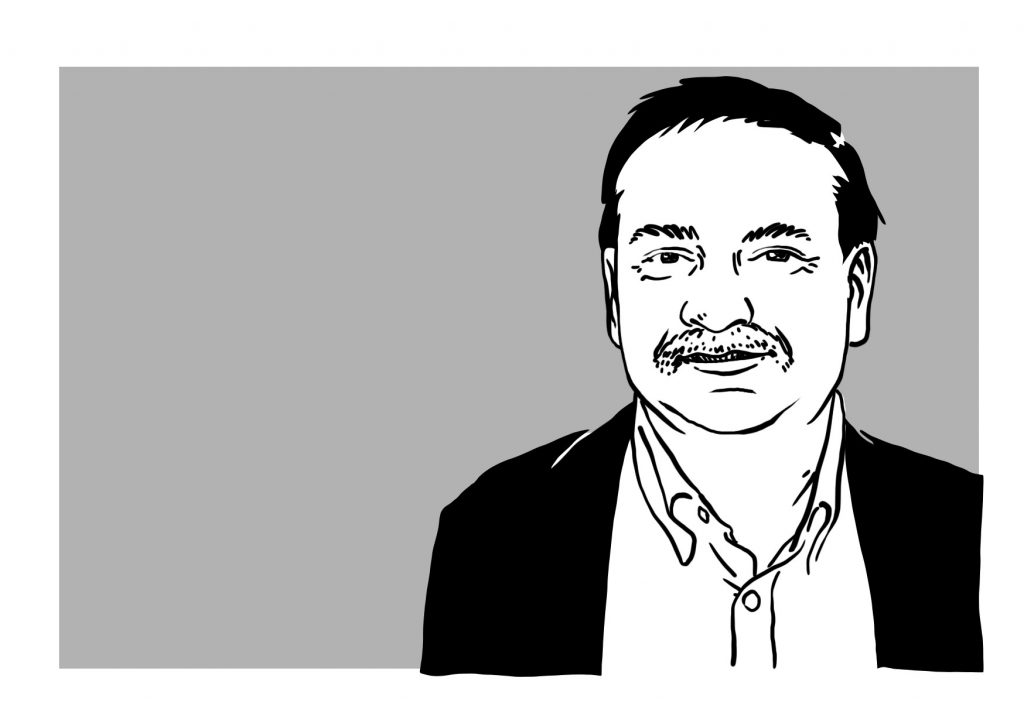As climate-induced disasters become frequent, the Least Developed Countries situated in the most vulnerable regions are faced with immense policy, funding, and resilience challenges. MPP student Nikhil Chaudhary meets with renowned adaptation expert and IPCC contributor Dr. Saleemul Huq, who recently conducted a workshop for the German Federal Ministry of the Environment, Nature Conservation and Nuclear Safety (BMU) in Berlin, to discuss why adaption remains neglected and how developing nations are driving it forward in multilateral negotiations.
The Governance Post: Having been part of all 23 high-profile Conference of Parties (COP) negotiations in the past, how have you seen the discourse on Climate Change Adaptation evolve since 1995?
Saleemul Huq: The Paris Agreement has, by far, been the biggest milestone which built consensus amongst all countries, with the exception of the US. But meanwhile, the global average temperature has now increased by 1.2 degrees. The effects of climate change for the Least Developing Countries (LDCs) have been unequivocal. 2017 was a pivotal year which saw climactic shifts scientifically attributable to human action. In the Caribbean, a continuously-occurring series of Category 4 hurricanes has never happened before. They did have regular hurricane seasons but the intensity has now increased due to higher sea-surface temperatures. There were wild fires in California, Australia and Portugal, as well as devastating floods all over Asia. New Zealand is now creating a new Category 6 over 5 because they’ve run out of categories for their largest hurricanes. The cumulative nature of an unprecedented number of events has been cited by the scientific community as a proof that we are already living in a ‘climate changed’ world. It’s no longer something that will happen in the future. The time to act is now. On the climate adaptation side, it is about dealing with exactly this – adapting as quickly and efficiently as possible and if you cannot adapt then proactively think about the concept of ‘loss and damage’, which is a very controversial area in climate negotiations.
TGP: What has been the role of the LDCs in past COP negotiations? Have they come together to unitedly place their demands?
SH: Yes, absolutely. There are three groups of vulnerable countries. The ‘LDC Group’ comprises 47 countries mostly from Sub-Saharan Africa and South Asia, including Bangladesh. It is also the group that I helped set up and I have been working with since COP-6 in terms of advising and capacity building. It has become a very strong group over the years. They are strategic, know what they want, negotiate effectively and they also align themselves with the other two groups.
The second group represents small-island developing countries, which negotiates under the umbrella of ‘Alliance of Small Island States’ (AOSIS). Third is the ‘Africa Group’ – a mix of Sub-Saharan nations, Egypt, Morocco and a few middle-eastern ones. All three groups represent roughly 100 countries. They generally stick together and try to negotiate for common demands. The acceptance of ‘loss and damage’ is a good example. We actively fought for it. It wasn’t something the developed countries wanted. Large developing countries supported us, but it wasn’t their primary issue.
TGP: Could you elaborate on this concept of ‘loss and damage’ (L&D)?
SH: It is basically accepting the fact that the world has failed to both mitigate and adapt to human-induced climate change. This has resulted in inevitable loss and damage which is manmade and not natural. And once this occurs, the issue of liability and compensation comes up. So, in a sense, in negotiations, the term ‘loss and damage’ is actually a euphemism for ‘liability and compensation’, which is considered taboo and the rich countries prefer not to use it.
But the notion is now universally accepted. The Paris Agreement includes it and there is an established need to do something about it, which is a new frontier. The developed countries are not completely willing to provide funds but they want to address capacity building and technologies to deal with L&D. Insurance is also an important area they’re interested in. Germany, in particular, is putting a lot of efforts into developing insurance as an L&D mechanism. But we have also raised the objection that this instrument is okay for some, but not for the poor who are in no way responsible for climate change. Why should they be made to pay premiums?
TGP: This gives us a good segue into the issue of global climate finance. Generally, mitigation efforts always win huge sums during negotiations but adaptation loses out. Why do you think this is so?
SH: That’s correct. Adaptation gets treated as a third cousin, not even the first cousin! In the developed countries of Europe including Germany, the governments’ institutional capacities have already been addressing their own adaptation issues with flooding and droughts. When it comes to doing adaptation at home, disaster management is just another job. Basically, they do not link this to climate change in the national context. Also, their international climate negotiation teams consist of mostly mitigation experts. So, what happens is a division of institutions. For instance, Germany’s Environment Ministry (BMU) which leads climate-related tasks is all about mitigation, while their Development Ministry (BMZ) are left to take over adaptation. The way I see this mentality is that – negotiating mitigation targets with biggest emitters like India and China is the “real thing”, while adaptation is only equated with giving aid through development agencies to small poor countries. We haven’t been able to convince everyone that adaptation is just as much a part and parcel of the climate problem. This perception needs to evolve. But some European countries like the Netherlands do understand this and they’re also putting substantial funds into it.
TGP: Do you think some European nations fail to associate mitigation with adaptation because they are yet to face catastrophic disasters that vulnerable countries experience regularly?
SH: Yes, but it is going to happen soon. And when it hits them, they will quickly switch sides. The same thing happened in Houston (with Hurricane Harvey). The people who understand this are trying to educate their constituents and colleagues, including those within German agencies. For example, the workshop I conducted with the BMU in Berlin highlighted how poorer countries also have a role to play in the climate problem and you also need to speak with them. It’s actually in Germany’s best interest to acknowledge this other side of the coin which is dealing with Greenhouse Gas (GHG) emissions’ worst impacts. Separating mitigation from adaptation has some logic, but there is also a great deal of merit in bringing them together and looking at the climate problem holistically.
The transport sector is a good example. In the case of road infrastructure, on one hand you have emissions associated with increasing vehicles and traffic but you also have the road safety issue and having to cope with emerging technologies (such as electric mobility). You need both. You need the technological side of emission reduction and then you need a human side for adaption. And it is better to think ahead rather than waiting to be hit by disasters, since the cost involved is always higher if you keep waiting.
TGP: Can you outline how the multilateral framework by the UNFCCC has evolved in the last decade?
SH: As established with the Paris Agreement, we have the Nationally Determined Contributions (NDCs) which mainly focus on mitigation targets. Even though it was optional, many countries have included adaptation into them. In fact, climate adaptation now also has its own vehicle, which is called the National Adaptation Plans (NAP). It is an ‘adaptation-only’ track parallel to NDCs and most countries are now working to prepare them. Although not mandatory, the German government is also looking at adaptation as a part of their ‘Support Project for Implementation of the Paris Agreement’ (SPA) initiative. What we’re presently trying to do is help the BMU in using SPA as a vehicle to support poorer countries.
In terms of international development, advanced countries who want to support climate action, are increasingly realising that their ‘mitigation only’ policy is not welcome in poor countries unless it also involves adaptation. In Bangladesh, for example, we are willing to reduce our emissions despite being a tiny GHG emitter. But that’s not our priority. So, if you (a developed country) come to Bangladesh or Fiji with just one mitigation-related tool in your toolbox and nothing on vulnerability, you’ll be told to come back when you have another tool. It’s a two-sided problem and just because you see one side, doesn’t mean that that the other one doesn’t exist.
(To be continued – Part Two will be released soon!)
 Dr. Saleemul Huq is the Director of the International Centre for Climate Change and Development (ICCCAD), Bangladesh and a Senior Fellow with the International Institute for Environment & Development (IIED), UK. He was a lead author for the third and fourth Assessment Reports of the Intergovernmental Panel on Climate Change (IPCC) and has co-authored four books on Adaptation Policy. He could be followed on twitter @SaleemulHuq
Dr. Saleemul Huq is the Director of the International Centre for Climate Change and Development (ICCCAD), Bangladesh and a Senior Fellow with the International Institute for Environment & Development (IIED), UK. He was a lead author for the third and fourth Assessment Reports of the Intergovernmental Panel on Climate Change (IPCC) and has co-authored four books on Adaptation Policy. He could be followed on twitter @SaleemulHuq

Nikhil Chaudhary is a section editor with The Governance Post and a first year MPP candidate at the Hertie School. Trained as an architect/urban-planner, he was previously a Senior Associate with the World Resources Institute India where he was engaged in sustainable urban development initiatives for local governments in Asia.
